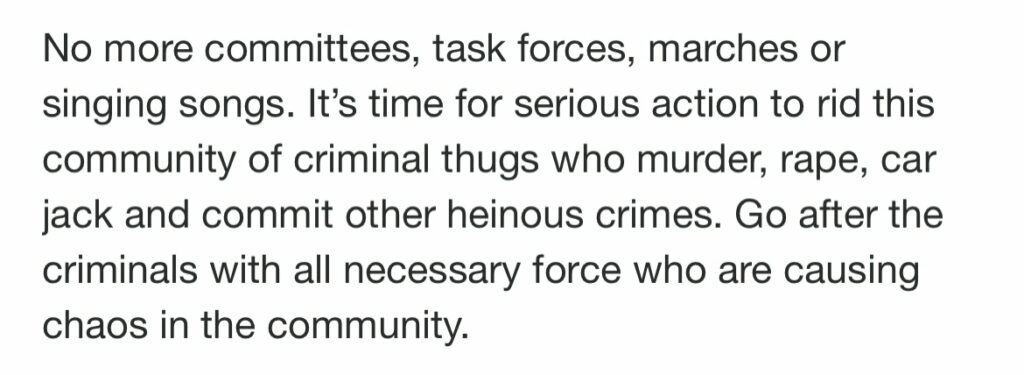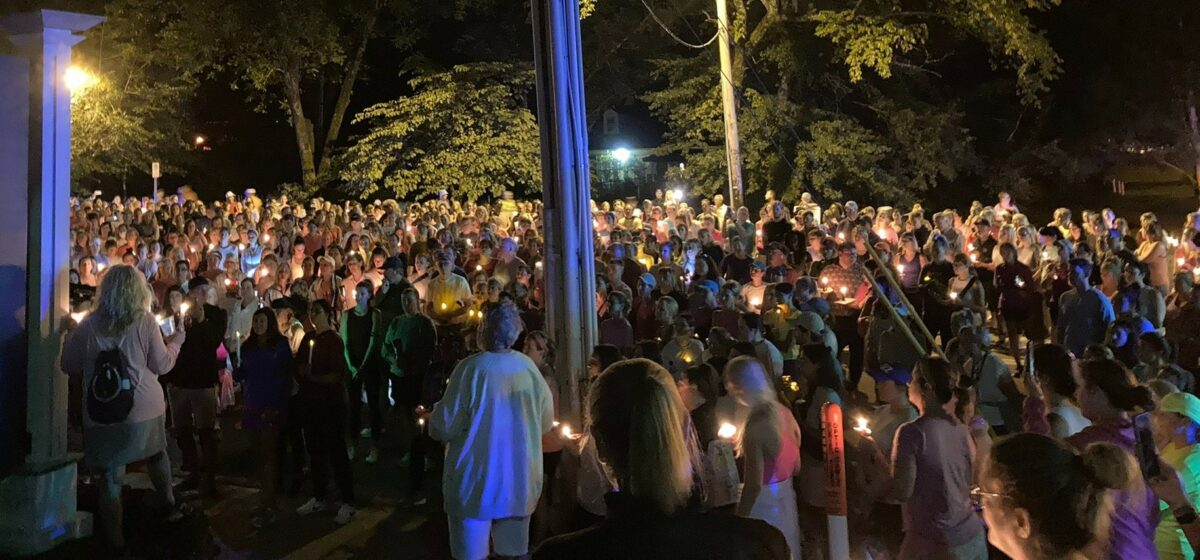In recent days we have seen the Memphis Police Department, the Shelby County Sheriff’s Office, the Tennessee Bureau of Investigation, and other law enforcement agencies and partners act swiftly to locate those responsible for the violence that has gripped the City of Memphis.
These heroes deserve our enduring gratitude for the incredible way in which they took coordinated action.
However, these tragic events have also brought to light additional challenges we face as a community when it comes to public safety. We have seen violent offenders being released early, only to return to criminal behavior. We have discovered a new backlog in processing evidence, added to a trial backlog. And we have observed an intense need for additional resources and reforms in the criminal justice system.
The public demands action.
The comment below, recently posted to a local news article, reflects the prevailing sentiment.

I agree with the emphasis on taking “serious action” to combat crime. However, I object to the dismissal of these itemized activities. They are each part of the solution. Let’s briefly review them, in reverse order.
Singing songs
This is a curious item to include. The most prominent episode of singing in recent memory is the group of thousands of citizens (pictured at the top of this page) assembled to honor the memory of Eliza Fletcher by singing “This Little Light of Mine” on a public street at 4 a.m.
Who was left unmoved by that?
Music reaches the parts of our psyche that inspire and motive us. Whether we use it for protest, cheering, or worship, singing results in action.
The public needs to remain involved, and they ought to be encouraged to use their right to assemble and their right to speak.
Marches
I’m amazed this has to be said in Memphis, Tennessee, but certainly marches are important from the standpoint of taking action.
One does not need to search long to find examples of marches that have resulted in sweeping reforms and systemic change. The civil rights movement. The women’s suffrage movement. Or, most recently, the annual March for Life in Washington, D.C., which has after 48 years led to the overturning of a landmark Supreme Court ruling.
Marches are a signal to those in authority, and they motivate the public to get involved and to take additional steps to implement change.
Task forces
Whatever is meant by this, it seemingly fails to recognize that when MPD, SCSO, TBI, and the FBI or any other law enforcement agency combines into a multi-jurisdictional unit, that is a task force.
Task forces are good things.
We need to make sure they have what they need to function well. Which leads us to…
Committees
It seems many have a negative opinion of the word “committee.” Maybe the concept seems frivolous or like a waste of time. Some might see it as a barrier to action, or as an excuse to delay action.
But committees are a fundamental aspect of our form of government, and they are the method by which legislative bodies act.
There is no reform, no policy, no budget amendment, and no legislation, that gets enacted without first touching a committee. That’s true for the City Council, for the County Commission, for the General Assembly, and for the US. Congress – every level of our government is organized this way.
For example, the new “truth in sentencing” law everyone is talking about started in a committee. Was that a waste of time?
Committees have many functions, including oversight, investigations, public hearings, and legislative deliberation. Every discussion we place on the agenda, and every resolution and ordinance, begins there.
Not one official action I have taken as county commissioner has been unassociated with a committee, even if it originates with the full assembled board – which is itself an elected committee.
If you ask someone in a legislative role to take action, that person is going to introduce it in a committee. That’s what it looks like when we work.
That’s how we act.
That is why I have called for the creation of a public safety committee.
Yes, we need another committee
You might be asking, isn’t another committee duplicative?
No, it isn’t duplicative.
Right now, public safety efforts are scattered throughout county government, and there is no coordinated method by which the county’s legislative body can investigate, provide oversight and guidance, or conduct a needs assessment.
Just some of the county leaders with a hand in public safety include: the sheriff, the public defender, the district attorney, the adult and juvenile courts, the judicial commissioners, corrections and detention, the office of re-entry, the community services department, the health department, the emergency management department, and the county school system.
Speaking with each of the stakeholders could easily stretch across at least these six standing committees, if not others:
- Law enforcement, corrections and courts
- Community services
- Hospitals and health
- General government
- Education
- Budget
In a previous blog post, Back to Safety, I made reference to many of the public safety initiatives that are underway throughout county government. You can consult that article for some of the specific things being done to improve public safety, and others that should be considered.
But I think it’s clear that if we’re going to act responsibly, it’s going to take a more strategic approach than the one we’ve had. And we need a forum in which such a strategy can form and such action can occur.
That’s the purpose of the proposed public safety committee.

